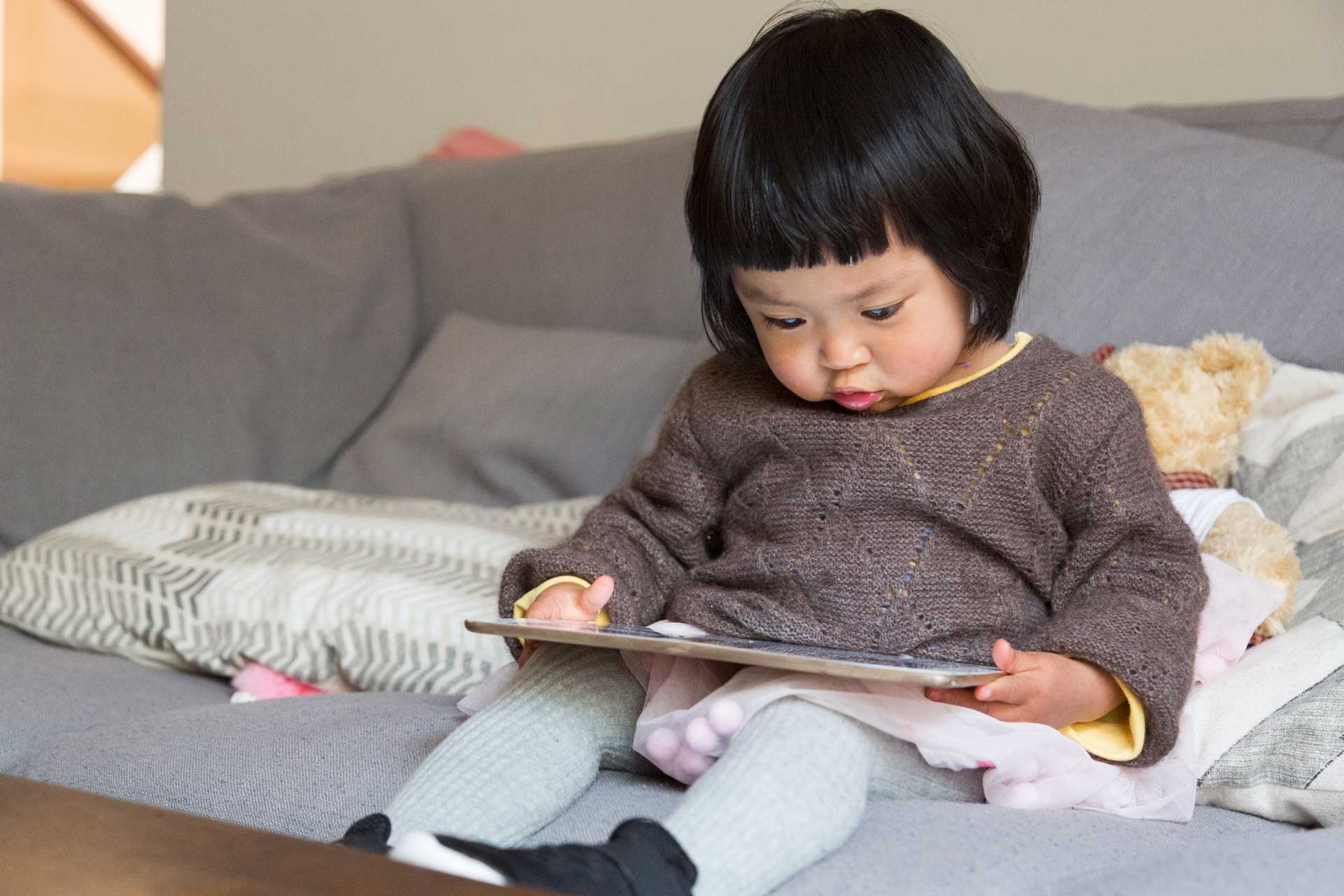sponsored
6 min Read
How To Manage Screen Time For Toddlers And Preschoolers

November 23, 2022
sponsored
6 min Read

November 23, 2022

Just about every parent of a toddler has caught themselves humming a Cocomelon song in the car—and for good reason. Catchy preschool jingles are the soundtrack of life with young kids. Many parents use the TV or a tablet to entertain kids while prepping dinner or folding laundry, and every parent everywhere has handed over their phone when waiting in a restaurant or a long line at the grocery store.
Screens are part of our daily lives. With phones conveniently tucked into our pockets and TVs, computers and tablet devices throughout the house , it’s super easy to rack up screen time without realizing it. But as important as devices are in our lives—and they are, for so many reasons—too much screen time can be harmful, especially for young children. Research shows that children under the age of five who consume more than one hour of daily screen time are more likely to have poorer physical health, social competence, emotional maturity, and language and communication skills compared to children who consumed less than one hour of screen time a day.
But don’t let that stat scare you. There are easy ways to monitor your child’s time in front of a screen. Read on for the answers to some common questions, plus tips and tricks for creating healthy screen time habits in your household.
What is an appropriate amount of screen time for my child?
The Canadian Paediatric Society (CPS) recommends limiting screen time to less than one hour per day for children between the ages of two and five. Screen time is not recommended for children under the age of two (but don’t panic if your baby locks eyes on the episode of Grey’s Anatomy you’re watching—it’s really only an issue if it becomes a habit).
How can I limit screen time?
Set expectations for everyone in the household. There should be clear boundaries around where and when screens can and can’t be used. For example, can devices be watched in the car on the way to daycare, or is screen time reserved for after dinner when the grown-ups are cleaning up? Decide when you want your child to have access to their devices and make sure the rules are understood. If there’s anything we know about toddlers, it’s that they can struggle when expectations shift, or when transitions aren’t clear-cut. Set a timer if you need to, so they know when they can have their device and when it needs to be put away.
Model good screen time behaviour. Consider how often you pull out your devices and whether you are just passing time scrolling or actually doing something productive. If your child is constantly watching you stare at a screen, no doubt they will want to do the same. (That’s not to say that you don’t deserve a little mindless Instagram or Pinterest time, but it’s a good idea to be mindful of the little eyes and ears around you.)
Turn off devices at mealtimes. Eating together without the distraction of a TV, tablet or phone will actually help to improve communication, help to build stronger relationships between family members, and become a touchpoint in the day to get and give support and encouragement to each other.
Use a screen time control app. The Microsoft Family Safety App empowers you and your family to create healthier screen time habits. You can set screen time limits for devices, as well as for specific apps and games. When the screen time limit runs out, you can choose to add more minutes, or move your kiddos on to another activity. The app’s content filtering settings also allows parents to ensure kids have a safe space to explore online by allowing caregivers to block inappropriate apps and games, as well as to limit browsing to kid-friendly websites. You can download the Microsoft Family Safety App on Google Play for Android devices or the Apple App Store.
Screen time calms my child down. Is this okay?
We’ve all been there: Your child is throwing a tantrum at the most embarrassing moment, so you quickly grab your phone and turn on Bluey to quiet them down. While a device might be effective at distracting or calming your distraught child, the CPS urges parents to be cautious about using screen time as a soothing mechanism. If this becomes the go-to to defuse a situation, your child may struggle to learn how to self-soothe without a device. Try some other calming strategies first, to help your child with difficult transitions. These may include a hug from a caregiver, colouring or painting, burning off some energy in a park or playground, lying down for a nap, etc.
How can I choose appropriate content for my child?
You’ve no doubt heard it many times before: Not all screen time is created equal. That’s why the CPS recommends parents take an active role in monitoring screen time for young children. While there’s nothing wrong with a little Paw Patrol, make sure it’s balanced out with educational games, apps and shows.
When selecting apps, choose educational apps that have a clear learning goal and that encourage participation. You may want to try out apps before your child uses them. Many apps, such as those included in the Microsoft Early Education Apps are offered at no charge and are advertisement-free, ensuring more control over content.
The trick to creating good screentime habits in your family is to create straight-forward rules and routines, and to try to lose the guilt around screen use (we know, easier said than done!). The fact that you’re here, reading this article, means you’re already aware and doing your best. Try a few of these tips, but don’t beat yourself up if you’re still humming Cocomelon next month. It’s all about moderation.
Sponsored by: Microsoft
